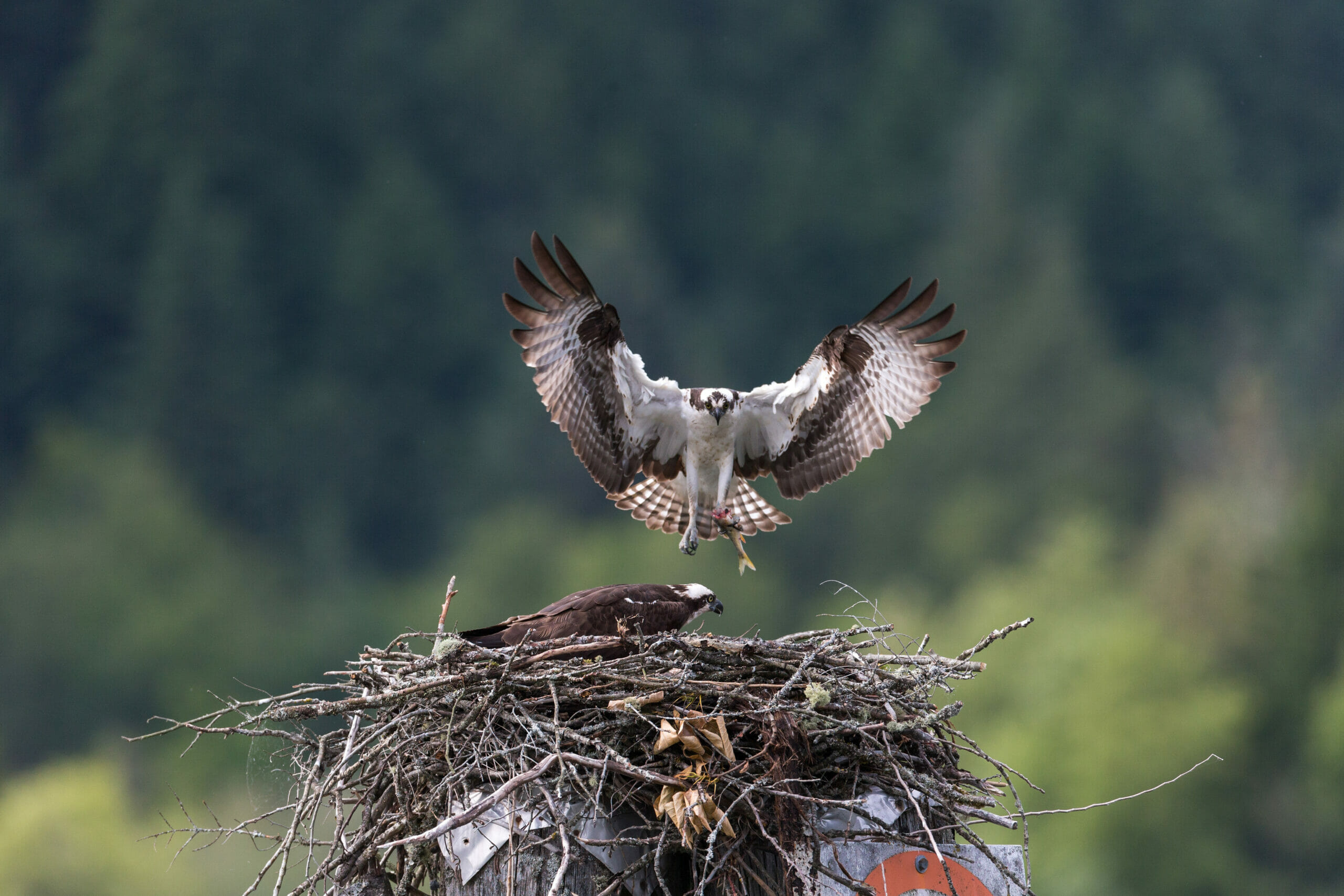Migratory Bird Season
New Braunfels, TX, March 15, 2023

It’s that time of year for birds such as eagles, ospreys, ravens, and crows to find a place to lay their eggs and have cute little babies. According to Wireless Estimator, there are over 128,000 registered cell towers in the United States. It is estimated that more than 7,500 towers across the United States will be the location of choice for birds to nest. Those numbers pretty much guarantee that many of us, either working at height or simply working on the ground, will be impacted by the presence of birds or a bird nest at a cell site. Did you know that of the 1,100 plus bird species found in the US, over 1,000 of them are protected by law? As many of you already know, migratory birds and telecommunication structures go hand in hand with springtime being the most common for bird activity. In this article, we will cover 3 key points to help you when encountering birds nesting on a communication structure.
- Understand the hazards of nesting birds.
- Look for signs of an active nest.
- Notify the structure owner if a nest is present.
- Understanding the hazards of nesting birds present
Nesting birds present some serious hazards to the workforce. The most common are falls and lacerations. Some birds can become aggressive and cause aerial workers to make sudden movements that could lead to falls. It is critical that you maintain 100% tie-off to the structure at all times to prevent this. Birds have sharp claws and can cause serious damage during an attack. Birds will try to attack you from behind so try to protect the back of your head as much as possible. Some birds might even be large enough to render you unconscious after striking you. Protect your face and ears by covering them up or hiding behind larger antennas. Another potential hazard is contracting an illness from exposure to bird feces. Some workers might experience severe allergic reactions. In other cases, workers could contract other types of respiratory ailments. If you encounter a site that is covered in feces, especially dry feces, stop working and contact your supervisor or EH&S to help develop a plan.
- Look for signs of an active nest
If birds are becoming agitated, aggressive, or avoid landing in the nest due to worker presence this could indicate the nest may be active. Warning signs from the bird like high pitch screeching or aggressive movements toward workers are a sign of an active nest. There is no way to determine if a bird is protecting eggs, hatchlings, or maybe even recently deceased babies without actually looking in the nest. This action should never be one you decide to take on your own. You must know for sure what you are dealing with before attempting to look inside a nest. Just like any other animal these birds are simply trying to protect their offspring. Respect must be given, and caution has to be taken in these situations. Wildlife agencies should be consulted prior to working at sites with nests and can provide guidance for completing work during the nesting season safely. In some cases, a biologist might need to be consulted to determine the nest status and evaluate your work options. If groundwork needs to proceed while the nest is active, contact the tower owner and carrier to determine next steps for proceeding with groundwork.
- Notify the structure owner if a nest is present
If a nest was identified during a previous visit, the structure owner’s NOC should advise you of this at check-in and offer guidance on how to proceed. If you don’t get this notice and see a nest while preparing to work or during your work activities, stop immediately and notify the tower owner with the following information: location and height of the nest, description of birds observed/species, observations of bird activity, and photos of the nest (if safe to accomplish). The next call should be to your supervisor, so they can notify the carrier’s regulatory team to receive appropriate written next steps according to their internal policies for working at nest sites. Email contacts for these teams can be obtained from the Ontivity safety team.
Many of us have been forced to deal with some type of bird situation in some form or fashion. Sometimes we can get a speedy resolution and other times our projects can be delayed several months. When faced with the hazard of migratory birds, remember to exercise best practices and stay within legal requirements. The consultation of 3rd parties to aid in identification, guidance, and in some cases cleanup might be necessary. The best course of action when you see a nest, or witness birds hoovering around a tower is to MAKE THE CALL!
If you want more information on those topics, reach out to the Ontivity safety team at safety@ontivity.com, and we will get you taken care of.
